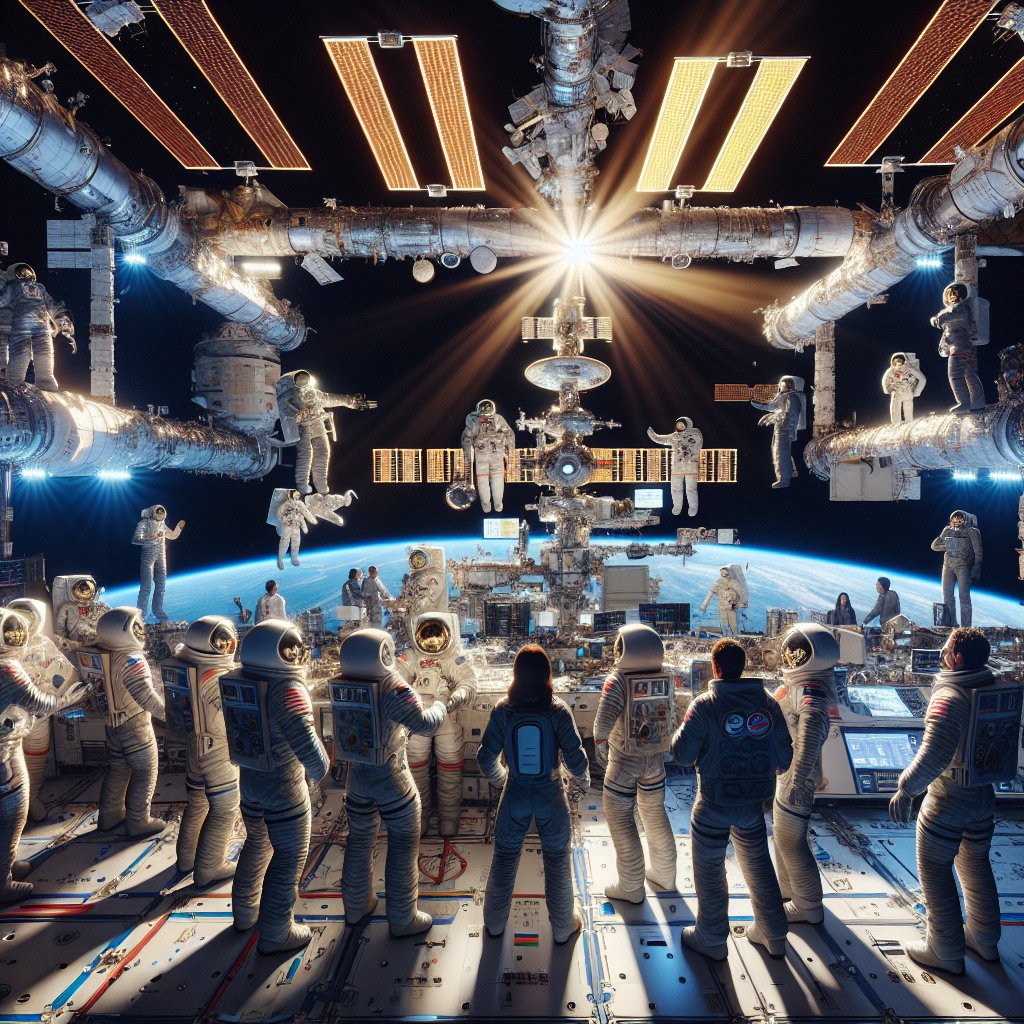The International Space Station (ISS) stands as a testament to what humanity can achieve through international collaboration. Orbiting Earth at an average altitude of approximately 420 kilometers, the ISS is a marvel of engineering and cooperation, bringing together space agencies from around the world to conduct research and foster peaceful relations. This article delves into the successes and challenges of international collaboration on the ISS, highlighting the achievements and obstacles faced by the global community in this ambitious endeavor.
Successes of International Collaboration on the ISS
The ISS is a unique platform for scientific research, technological development, and international cooperation. One of the most significant successes of the ISS is its ability to bring together diverse nations with varying political, economic, and cultural backgrounds to work towards a common goal. The collaboration involves five space agencies: NASA (United States), Roscosmos (Russia), JAXA (Japan), ESA (European Space Agency), and CSA (Canadian Space Agency). This partnership has led to numerous scientific breakthroughs and technological advancements.
Scientific Research and Discoveries
The ISS serves as a microgravity laboratory where scientists conduct experiments that would be impossible on Earth. This unique environment has led to significant discoveries in fields such as biology, physics, and materials science. For instance, research on the ISS has contributed to a better understanding of muscle atrophy and bone loss, which has implications for both astronauts and patients on Earth suffering from similar conditions. Additionally, the study of fluid dynamics in microgravity has provided insights into improving fuel efficiency and developing new materials.
Moreover, the ISS has been instrumental in advancing our knowledge of space weather and its impact on Earth. By studying cosmic rays and solar radiation, scientists can better predict and mitigate the effects of space weather on satellites, power grids, and communication systems. This research is crucial for protecting our increasingly technology-dependent society.
Technological Advancements
The development and maintenance of the ISS have driven technological innovation in various fields. The need for reliable life support systems, efficient power generation, and advanced robotics has led to the creation of new technologies that have applications beyond space exploration. For example, the water purification systems developed for the ISS are now being used to provide clean drinking water in remote and disaster-stricken areas on Earth.
Furthermore, the ISS has served as a testing ground for new technologies that will be essential for future space missions. The development of autonomous systems, advanced propulsion technologies, and habitat modules are all being tested on the ISS, paving the way for future missions to the Moon, Mars, and beyond.
Challenges of International Collaboration on the ISS
While the ISS is a symbol of international cooperation, it has not been without its challenges. The complexities of managing a multinational partnership, coupled with technical and financial hurdles, have posed significant obstacles to the success of the ISS program.
Political and Diplomatic Challenges
One of the primary challenges of international collaboration on the ISS is navigating the political and diplomatic landscape. The partnership involves countries with differing political systems, priorities, and agendas, which can lead to tensions and disagreements. For instance, geopolitical conflicts and economic sanctions have occasionally strained relations between partner countries, impacting the smooth operation of the ISS.
Despite these challenges, the ISS has largely remained a neutral ground for scientific collaboration, with partner countries working to resolve conflicts through diplomatic channels. This ability to maintain cooperation in the face of political tensions is a testament to the commitment of the partner nations to the success of the ISS program.
Technical and Financial Challenges
The construction and maintenance of the ISS have been fraught with technical and financial challenges. The complexity of assembling a space station in orbit, with components built by different countries, required unprecedented levels of coordination and engineering expertise. Technical issues, such as equipment failures and the need for regular maintenance, have necessitated ongoing collaboration and problem-solving among partner nations.
Financial constraints have also posed significant challenges to the ISS program. The cost of building and maintaining the ISS is estimated to be over $150 billion, with funding coming from the budgets of the partner space agencies. Economic fluctuations and budgetary pressures in partner countries have occasionally threatened the continuity of the program, requiring careful negotiation and resource allocation to ensure the ISS remains operational.
The Future of International Collaboration in Space
As the ISS approaches the end of its operational life, discussions about the future of international collaboration in space are gaining momentum. The lessons learned from the ISS program will be invaluable for future endeavors, such as the Artemis program, which aims to return humans to the Moon, and the planned missions to Mars.
International collaboration will continue to be a cornerstone of space exploration, as no single nation can bear the financial and technical burden of such ambitious projects alone. The success of the ISS has demonstrated the potential of international partnerships to achieve remarkable feats, and future missions will likely build on this foundation to explore new frontiers in space.
In conclusion, the International Space Station is a shining example of what can be achieved through international collaboration. Despite the challenges faced, the successes of the ISS program have paved the way for future cooperative efforts in space exploration. As humanity looks to the stars, the spirit of collaboration and shared purpose will be essential in overcoming the challenges that lie ahead.










